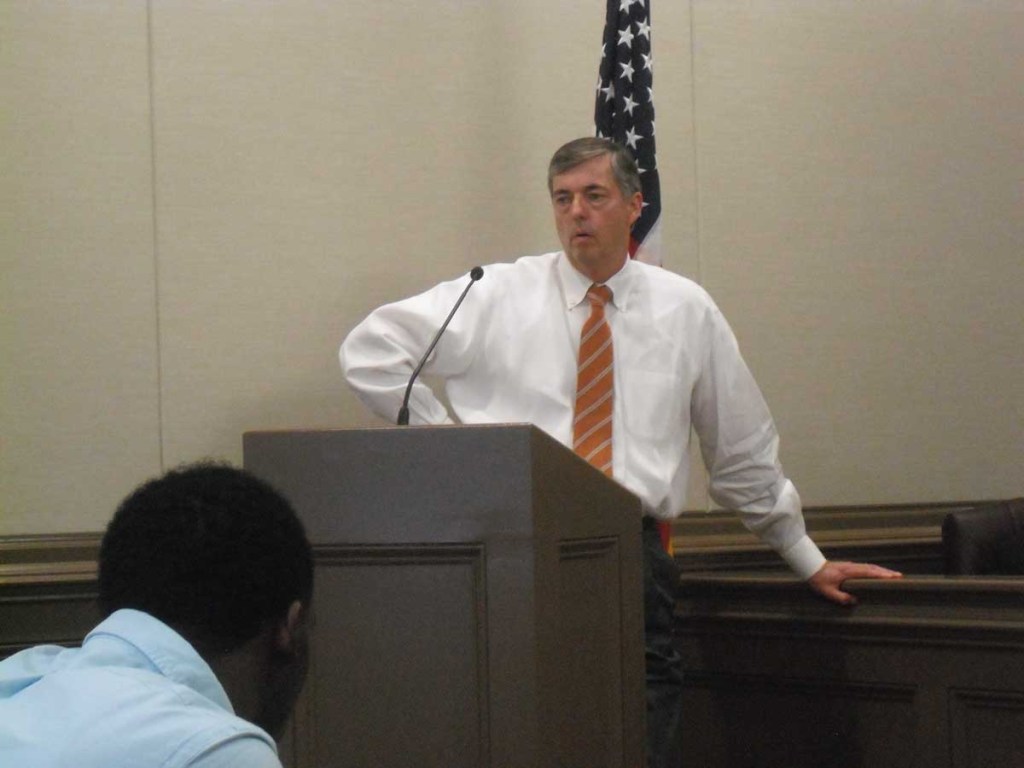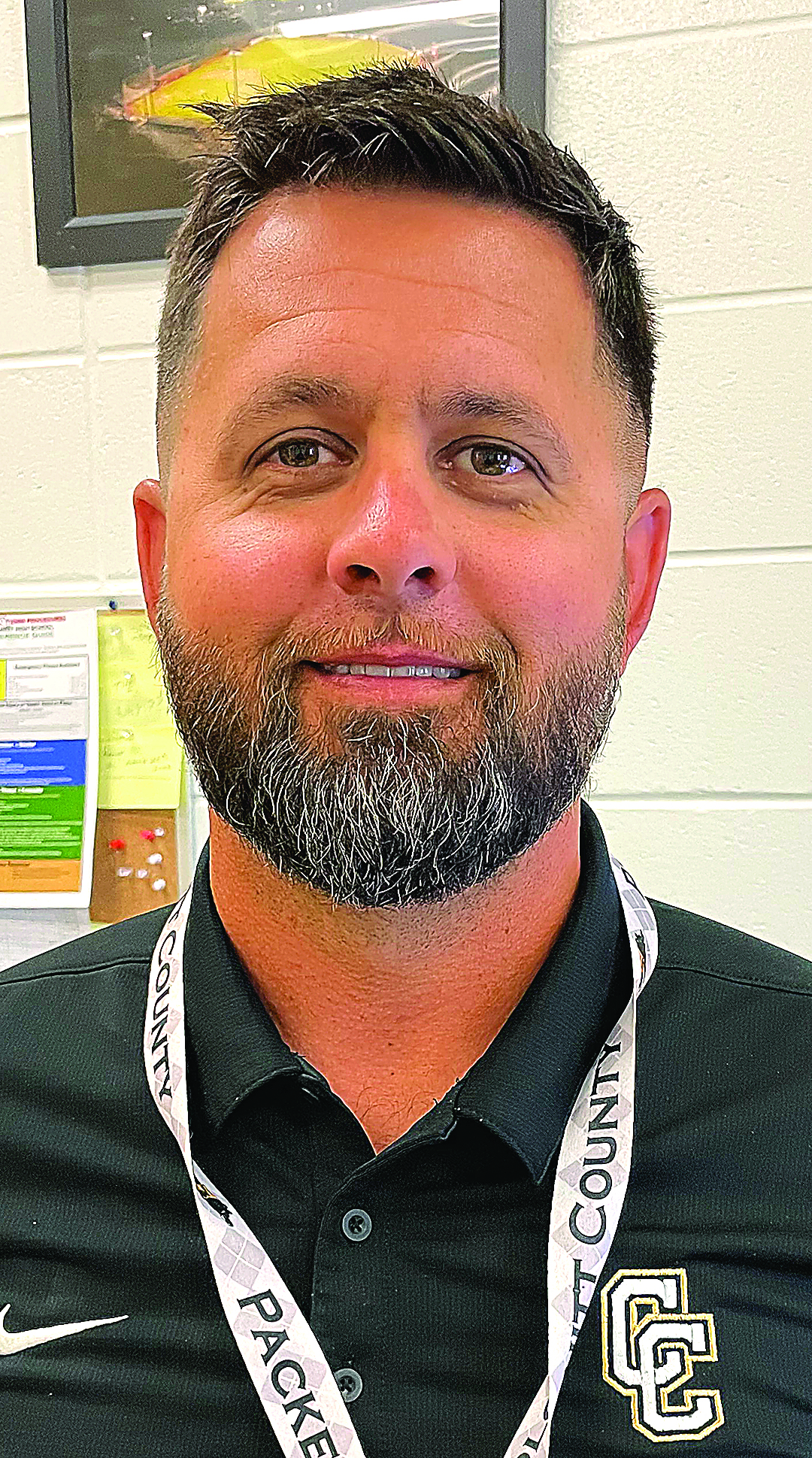New water treatment plant recommended
Published 12:30 pm Thursday, September 29, 2016

- East Region President Steve Cawood with architectural firm Goodwyn, Mills, and Cawood outlines options regarding the city's two water treatment facilities at Tuesday night's City Council work session.
MILLEDGEVILLE, Ga. — The two water treatment plants that serve the city of Milledgeville are in need of costly upgrades or outright replacement, according to representatives from architectural and engineering firm Goodwyn, Mills, and Cawood.
Representatives from the company attended Tuesday night’s city council work session and provided evaluations of the Lamar F. Ham and James E. Baugh water treatment facilities. Steve Cawood, president of the company’s east region was the chief presenter.
Trending
“You have two water treatment plants at two different locations, and we’re going to examine what it would take to upgrade those and get them to today’s standards versus building one new one,” said Cawood.
The Ham plant was constructed in 1953 while the Baugh facility was completed back in 1906. The two plants together are permitted to draw 12 million gallons of water per day (MGD), and based on statistics gathered by the firm over the last five years the city of Milledgeville peaked at about 6.5 MGD in July 2015. On an average day, the city draws roughly 3 MGD.
“The two plants together have about 12 million gallons a day capacity, and that’s the size of the new plant that we’re recommending in an apples to apples comparison at 12 million gallons a day,” Cawood said. “That gives you plenty of room for growth.”
That growth could come in the form of new customers or possible industries with their eyes on doing business in Milledgeville.
Later in the presentation, he revealed that the projected cost of building one new plant based on preliminary estimates would be $26.2 million versus $28.9 million for upgrading the two existing ones.
Cawood was joined by Tim Blaydes, regional engineering manager for Goodwyn, Mills, and Cawood, who broke down the needs for the two existing plants. Based on the company’s evaluation, Blaydes said that both are in need of structural, electrical, plumbing, HVAC and piping upgrades.
Trending
“As you can imagine we’ve got a 60-year-old plant and a 100-year-old plant so there are a lot of needs with that much age on them,” Blaydes said. “As you can tell all the major systems are in need of improvements or replacements.”
Despite the need for improvements across the board, Cawood commended city officials and employees for the way the plants have been managed over the years and said that the system has three indicators of a healthy water network.
“One is you don’t have any trouble with the state and federal regulators, two would be that you have plenty of capacity, and three that you have competitive rates. That’s something you should all be proud of. In spite of age, the plants are turning out good quality water.”
Based on research compiled by the engineering firm, water customers within the city of Milledgeville pay less than those that live in Eatonton, Gray and Dublin based on 5,000 gallons per month of usage.
Cawood, speaking on behalf of the firm, recommended that the city move to one water treatment facility that would be located where the Baugh plant currently sits, and touted the savings that would come along with only having to maintain one site.
“We believe one plant with moderate electrical pumps and pumping system and such would save about $110,000 a year. We’ve also worked with Robert and his group and believe savings from having one plant to maintain versus two is another $230,000 a year. So there’s a lot of savings there from going to one new, modern plant.”
Once the new plant is complete, the Ham facility would be demolished but the city would still be able to draw water from that site.
Engineering firm representatives then opened the floor for questions, and Mayor Gary Thrower quickly asked, “What would be a useful life for the plants as they stand today?”
“Mayor, I think a large part of both of those plants you’ve probably used it,” Cawood replied. “We’re replacing a pump out there right now that we’re having to replace because it’s old and you can’t get parts for it. You’ve got some structural issues out there that you could come in to put band-aids on and shore it up a little bit, but I think one of them is a 110-year-old plant and the other one is a 62-year-old plant so I would say there are a lot of benefits and savings that could come from going to one plant. I’m not an alarmist by any means, you asked the question and I think you’ve gotten a lot of life out of them.”
Jeanette Walden, District 2, asked about upkeep of the new facility citing a surprise maintenance cost faced by the city of Eatonton and Putnam County with their new facility. Cawood and Blaydes allayed her fears and said maintenance of the proposed Milledgeville plant would have the similar maintenance costs as the current system.
“I think that was a great presentation and very informative,” Thrower said. “I think the next step is to let us talk amongst ourselves and come to a conclusion. We surely appreciate you spending the time to come down to Milledgeville today.”





